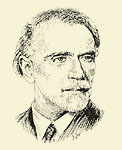 Zoltán Kodály
Zoltán Kodály The Kodály Concept of Music Education
Website no longer available.
Method, or principles?
Zoltán Kodály's ideas on music education are usually mentioned under the name Kodály Method. It is more accurate to say Kodály Concept because the composer himself did not work out any complete and detailed methodological process of teaching music. He formulated principles rather than teaching techniques or a step-by-step process or advice for teachers. The adaptation of the principles to the reality was elaborated and developed by his disciples and his followers. The basic principles of the concept were formed, articulated and gradually put into practice after the composer's attention had turned to music pedagogy, especially in the frame of general schooling around 1925.
An educational philosophy
Kodály's ideas on reform are rooted in the problems and opportunities of the historical, social and cultural circumstances of Hungary of that time. Several of his ideas are connected with other theories or methods of music-education. However, Kodály's music educational philosophy can be recognized as his own. it is rooted in Hungarian soil, nevertheless the Kodály Concept can be adapted to other musical-cultural situations.
Music is part of universal human knowledge
While standing up for the rightful place of music education in the school curriculum, Kodály also fought for the appreciation of music among the arts in society. "There is no sound spiritual life without music." "Music is an indispensable part of universal human knowledge." This is why he formulated a slogan: "Let music belong to everyone!" Then "it is only natural that music has to be made part of the school curriculum."
Kodály Websites
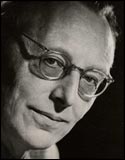 Carl Orff
Carl Orff
Carl Orff (1895-1982) is probably best known as the composer of such works as Carmina Burana and Catulli Carmina, but it is his work with "Music for Children" which has inspired a global movement in music education.
The Orff approach to Music Education is holistic, experiential and process oriented. It is for all children, not just the most musically or intellectually gifted and encompasses aural, visual and kinesthetic learners.
Orff's philosophy is based on solid, pedagogical principles. A structured, sequential development of knowledge and skills encourages joyful participation, creativity, and personal musical growth from all participants. The Orff approach taps the very essence of our beings. Children learn through doing, exploring and improvising. They are active participants in an integrated, guided process, one which allows for differing musical abilities. In the Orff approach, no child is neglected.
The Orff philosophy combines the elements of speech, rhythm, movement, dance, and song. And at the heart of all this is improvisation - the instinct children have to create their own melodies, to explore their imaginations.
- Elemental music is never only music but an integration of movement, dance and language. It is music one creates oneself in which one is involved not as a listener, but as a participant. (Carl Orff)
The Orff approach is not only for children. In recent years, Orff specialists have experienced its flexibility and adaptability in their work with junior and senior high school students, adults, senior citizens, palliative care patients, and in many individual and group settings from private teaching to classroom to church.
From the Canadian Orff Website - no longer available.

Orff-Schulwerk Websites

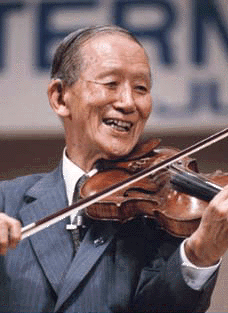 Shinichi Suzuki
Shinichi Suzuki
Inspired by a recording by Mischa Elman of Ave Maria, Suzuki began to teach himself to play the violin. Over the next few years, he dedicated himself to the study of the instrument and then, at the age of 22, travelled to Berlin to study with the renowned violinist, Karl Klinger. It was here in Germany that Suzuki became a friend of Alfred Einstein and through him, associated with many of the world’s leading artists and thinkers. Suzuki met and married Waltraud Prange, a concert soprano and they returned to Japan in 1928 where he began teaching and performing with the Suzuki Quartet.
Suzuki was asked by a colleague at the Imperial Conservatory to teach his young son and became stimulated to think about the ways in which children learn. Then with the outbreak of World War II, Suzuki was separated from his wife as she was classed as a foreigner. With food very scarce and conditions less than ideal, Suzuki became very ill, taking months to recover. From this experience grew a determination to positively influence the lives of children.
In Germany he had observed how easily the young children learnt to speak German, a language he was struggling to master. He also realised that all Japanese children easily learn to speak Japanese, a highly complex language. All children are able to learn their mother tongue effortlessly through listening, imitation and repetition. He concluded that children could also learn music this way, if taught with love and dedication.
Suzuki taught using the concept 'character first, ability second’. His goal was to embrace the whole child, nurturing a love of music and the development of a fine character rather than just the mastering of a musical instrument. Suzuki called his idea 'Talent Education’ and soon established a school in Matsumoto.
Talent Education refers to the development of skill, knowledge and character. The word 'saino' (talent) in the Japanese language means both ability and talent. There is no distinction between the two meanings as there can be in English. 'Saino' can also be used to mean the development of ability and talent in a skills area such as music and in a personal development area such as one's character.
From the Australian Suzuki Website - No longer available.
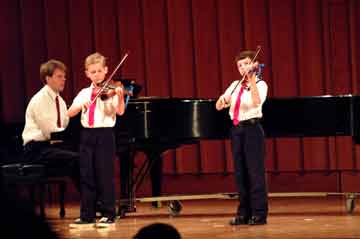
What Is the Suzuki Method?
Belief That Every Child Can Learn
The "Mother Tongue" approach is based on Suzuki’s observation that children have a remarkable ability to speak and understand their native language at a very young age. Suzuki reasoned that, similarly, children can easily learn music through this same process of listening and repetition.
Loving & Cooperative Environment
Suzuki recognized the importance of a quality environment in which the child is nurtured by love and encouragement. A caring and cooperative environment established by teachers and parents promotes growth and learning by children.
Parental Involvement
Children can sustain greater interest and progress more rapidly with a participatory parent. Parents attend all lessons with their children and direct the home practice of their children. Parents are given specific instructions during the individual lessons on how to guide the child’s practice. It is not necessary for parents to have prior musical training.
Step-by-Step Mastery
Each skill is broken down into its smallest steps. Each step is easily assimilated and repeated many times before continuing. The child progresses at his/her own pace. The sequence of skills taught is based on a logical and coherent progression. This ensures the success of the child.
Enthusiasm & Fun
Children progress more quickly in a non-stressful environment and with enthusiastic teachers/parents who demonstrate the fun of learning to play an instrument.
Listening
Children’s ears are trained for musical sounds (as similar to the nuances of language pronunciation and accents) by daily listening of tapes or CDs of the current and future Suzuki repertoire. In addition, parents are strongly encouraged to expose their children to master performances on CD and to live professional concerts and symphony orchestras.
Repetition
Daily practice, as with language learning, is necessary for progress. To enhance technical skill and musical expression, the child continually reviews and refines past pieces.
Memory & Music Reading
As with language, children learn to speak before they learn to read; similarly, children learn to play from memory prior to reading music notation. All music is memorized so the child can focus on the skills necessary to playing the instrument. When the child is ready to read music (as determined by the teacher), music notation is quickly assimilated by most children, as a result of their vast aural and technical background that merely needs translation into visual notation.
Group lessons
While both fun and motivating, group classes reinforce individual lessons and provide valuable opportunities for children to observe and learn from other children at slightly different skill levels.
Taken from the Northern Indiana Suzuki Music School - Website no longer available.


Dalcroze and Eurhythmics
What Is Dalcroze
Eurhythmics?
 Eurhythmics was developed
during the early part of the 20th century by Emile Jaques-Dalcroze, a Swiss
musician and teacher. His unique pedagogical approach, based on hearing and
feeling as primary sources for learning, preceding the study of theory, shows a
keen perception of how people learn. He stressed the importance of sensory
experience, the value of pleasure and challenge in developing attentiveness,
concentration and the innate potential for creativity.
Eurhythmics was developed
during the early part of the 20th century by Emile Jaques-Dalcroze, a Swiss
musician and teacher. His unique pedagogical approach, based on hearing and
feeling as primary sources for learning, preceding the study of theory, shows a
keen perception of how people learn. He stressed the importance of sensory
experience, the value of pleasure and challenge in developing attentiveness,
concentration and the innate potential for creativity.
The recognition of the kinesthetic sense, the sensory feed-back mechanism of the body, and its role in developing coordination both physical and mental was a unique contribution of E. J. Dalcroze. His concepts and approach to music education, embodied in today’s Dalcroze work, can also be recognized in the subsequent methods of Carl Orff and Kodaly. (Website no longer available).
A Dalcroze education is a musical training comprising the basic elements of music: rhythm, dynamics, tone and form. It has three branches: Eurhythmics trains the body in rhythm and dynamics; Solfège trains the ear, eye and voice in pitch, melody and harmony; Improvisation puts it all together according to the student's own invention- in movements, with voice, at an instrument.
For children, and often for adult beginners, these three aspects of the Dalcroze work are integrated in a single class, in which the students move, sing, and play as they engage in a variety of activities involving listening, responding, and inventing.
As the students become more advanced, the three branches are formally separated, each having its own class. However, in the spirit of musical wholeness that characterizes Dalcroze, each class includes all three aspects of the work.
Dalcroze training stimulates, develops, and refines all the capacities we use when we engage in music: our senses of hearing, sight, and touch; our faculties of knowing and reasoning; our ability to feel and to act on our feelings. Coordinating these capacities is the kinesthetic sense, the feedback mechanism of the nervous system which conveys information between the mind and the body. The education of this sense to the purposes of music is at the heart of the Dalcroze work.
This approach, so radical in its inception one hundred years ago, has found its moment in the current explosion of interest and research in music education. The newest discoveries and theories of learning point exactly to the teaching innovations that Dalcroze proposed at the beginning of this century.From https://dalcrozeusa.org/ - Website article no longer available.
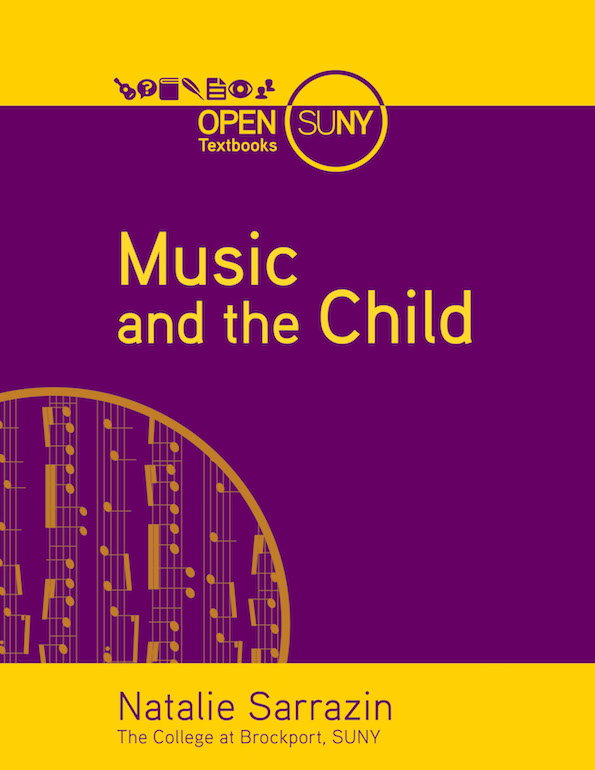
Recommended Online Text: Music and the Child - https://courses.lumenlearning.com/suny-music-and-the-child/ (OER)

Copyright 2003 by Carla Piper, Ed. D.